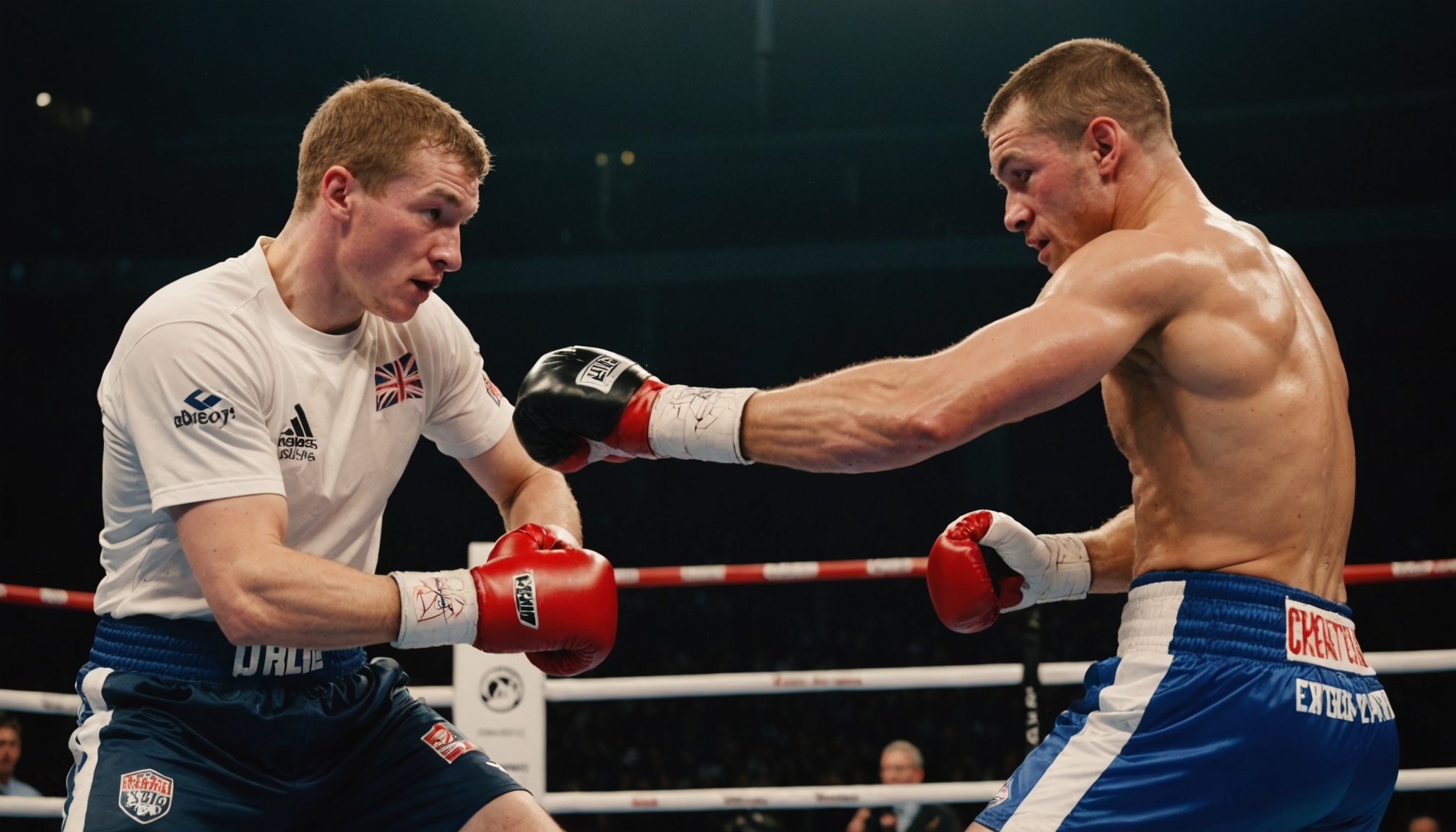Exploring the Lasting Physical Impact of Combat Sports Participation in the UK to Combat Sports and Their Popularity
Combat sports, including martial arts and mixed martial arts (MMA), have gained significant popularity in the UK over the past few decades. These sports are not only popular among professional athletes but also among recreational participants who seek to improve their physical fitness, mental health, and self-esteem. However, the physical impact of participating in these sports is a critical area of study, given the high risk of injuries and long-term health consequences.
Types of Injuries in Combat Sports
Combat sports are inherently physically demanding and carry a high risk of injury. A comparative study on injuries in martial arts and combat sports highlights that the most frequent injuries include broken bones (21%) and damages to knee ligaments (16%).
Also read : Understanding the Legal Consequences of Unauthorized Street Fights in the UK
Common Injuries by Sport
- Martial Arts: Injuries such as fractures, dislocations, and soft tissue injuries are common. For example, karate practitioners often suffer from injuries to the hands, feet, and head.
- Mixed Martial Arts (MMA): MMA fighters are prone to a wide range of injuries, including concussions, broken bones, and severe cuts.
- Boxing: Boxers frequently suffer from head injuries, including concussions and chronic traumatic encephalopathy (CTE), as well as injuries to the hands and eyes.
Long-term Health Consequences
The long-term health consequences of participating in combat sports are a significant concern. Here are some key areas to consider:
Neurological Health
- Concussions and CTE: Repeated head trauma in sports like boxing and MMA can lead to long-term neurological damage, including CTE. This condition can result in memory loss, depression, and dementia.
- Quote from Dr. Debbie Palmer: “The impact of repeated head contacts in rugby and other combat sports is a critical area of research. Our studies aim to reduce the risk of concussion and long-term brain damage through evidence-based injury prevention programs.”
Musculoskeletal Health
- Chronic Injuries: Combat sports participants often suffer from chronic injuries such as tendonitis, ligament sprains, and joint degeneration. These injuries can lead to long-term pain and reduced mobility.
- Example: A study on golfers post-hip and knee replacement surgery found that while many golfers return to their sport, they often experience changes in joint biomechanics and golfing performance.
Mental Health
- Stress and Anxiety: The physical and mental demands of combat sports can lead to stress and anxiety. However, physical activity is also known to improve mental health by reducing symptoms of depression and anxiety.
- Quote from Ali Oliver, CEO of Youth Sport Trust: “Sport is never going to be the biggest driver of improvement in the short term, but it lays the foundations for behaviors and lifestyles that can last a lifetime, including improved mental health standards.”
Promoting Safe Participation and Injury Prevention
Given the risks associated with combat sports, it is crucial to promote safe participation and injury prevention strategies.
Also to read : Top Summer Camps in the UK for Young Fighters to Enhance Their Skills
Injury Prevention Programs
- World Rugby Activate Program: This program, funded by World Rugby, aims to reduce the burden of match and training injuries in rugby. The program is being evaluated for its efficacy in female rugby union players, highlighting the need for gender-specific injury prevention strategies.
- Table: Comparison of Injury Prevention Programs
Program Focus Target Population Key Strategies World Rugby Activate Reduce head contacts Rugby players Education on safe tackling, strength and conditioning exercises SHAPE Research Centre Enhance health and well-being Various populations Physical activity interventions, nutrition advice, mental health support ESMRN Evaluate injury incidence National level athletes Data collection, analysis of training and match injuries, policy recommendations Community and Organizational Support
- Community Outreach: Organizations like the Youth Sport Trust and Sported UK advocate for physical activity by offering accessible programs for all ages and collaborating with local communities to host sports events and wellness fairs.
- Quote from Sophie Mason: “If we keep the focus on professional sport, we don’t see the benefits of sport in other social ways. Grassroots sport offers a real opportunity to engage more people in physical activity.”
The Role of Research and Policy
Research and policy play a vital role in understanding and mitigating the physical impact of combat sports participation.
Research Initiatives
- SHAPE Research Centre: This centre at Nottingham Trent University conducts cross-disciplinary research on the biological, physical, psychological, and societal impact of sport and exercise. Their work includes studies on women’s sport, mental health, and the environment.
- ESMRN: The Edinburgh Sports Medicine Research Network collaborates with other universities and policy makers to assess health benefits and prevent injuries in various sports, including golf and rugby.
Policy Impact
- Funding and Support: Government policies and funding can significantly impact the availability of sports programs and injury prevention initiatives. For instance, the School Games introduced by the UK government broadened opportunities for competition and personal development in schools.
- Quote from Dr. Paul Kelly: “Policy impact work is crucial in combating the effects of physical inactivity. By challenging long-held assumptions, we can support more people to become more active.”
Practical Insights and Actionable Advice
For those involved in combat sports, here are some practical insights and actionable advice to minimize the physical impact:
Warm-Up and Cool-Down
- Proper Warm-Up: Always start with a thorough warm-up to prepare your muscles for the physical demands of the sport.
- Cool-Down: After training or competition, ensure you cool down properly to reduce muscle soreness and prevent injuries.
Training and Load Management
- Gradual Progression: Gradually increase your training intensity and load to avoid overtraining and reduce the risk of injury.
- Quote from Dr. Jack Ashby: “Optimal training and load management are key to enhancing performance while minimizing the risk of injury. Our research focuses on identifying the key physiological and engineering factors that ensure optimal outcomes.”
Nutrition and Recovery
- Balanced Diet: Maintain a balanced diet that includes adequate protein, carbohydrates, and healthy fats to support muscle recovery and overall health.
- Rest and Recovery: Ensure you get sufficient rest and engage in recovery techniques such as stretching, foam rolling, and massage.
Mental Health Support
- Seek Support: If you are experiencing stress, anxiety, or other mental health issues, seek support from mental health professionals or support groups.
- Quote from Ali Oliver: “Sport can improve mental health standards, but it is also important to recognize when additional support is needed.”
Participating in combat sports can have a significant and lasting physical impact, ranging from acute injuries to long-term health consequences. However, with the right strategies, support, and research, it is possible to mitigate these risks and ensure a safe and beneficial participation in these sports.
By understanding the types of injuries, long-term health consequences, and the importance of injury prevention programs, community support, and research initiatives, participants can make informed decisions about their involvement in combat sports. Remember, the benefits of physical activity, including improved health, mental well-being, and self-esteem, can be achieved while minimizing the risks through careful planning and support.
As Dr. Gavin Weedon from the SHAPE Research Centre notes, “Our research aims to advance scientific knowledge to support diverse and inclusive populations in sport and exercise, ultimately enriching the lives of young people, high-performing athletes, and older adults.” By advocating for physical activity and supporting safe participation, we can ensure that combat sports continue to be a positive and enriching part of many people’s lives.











